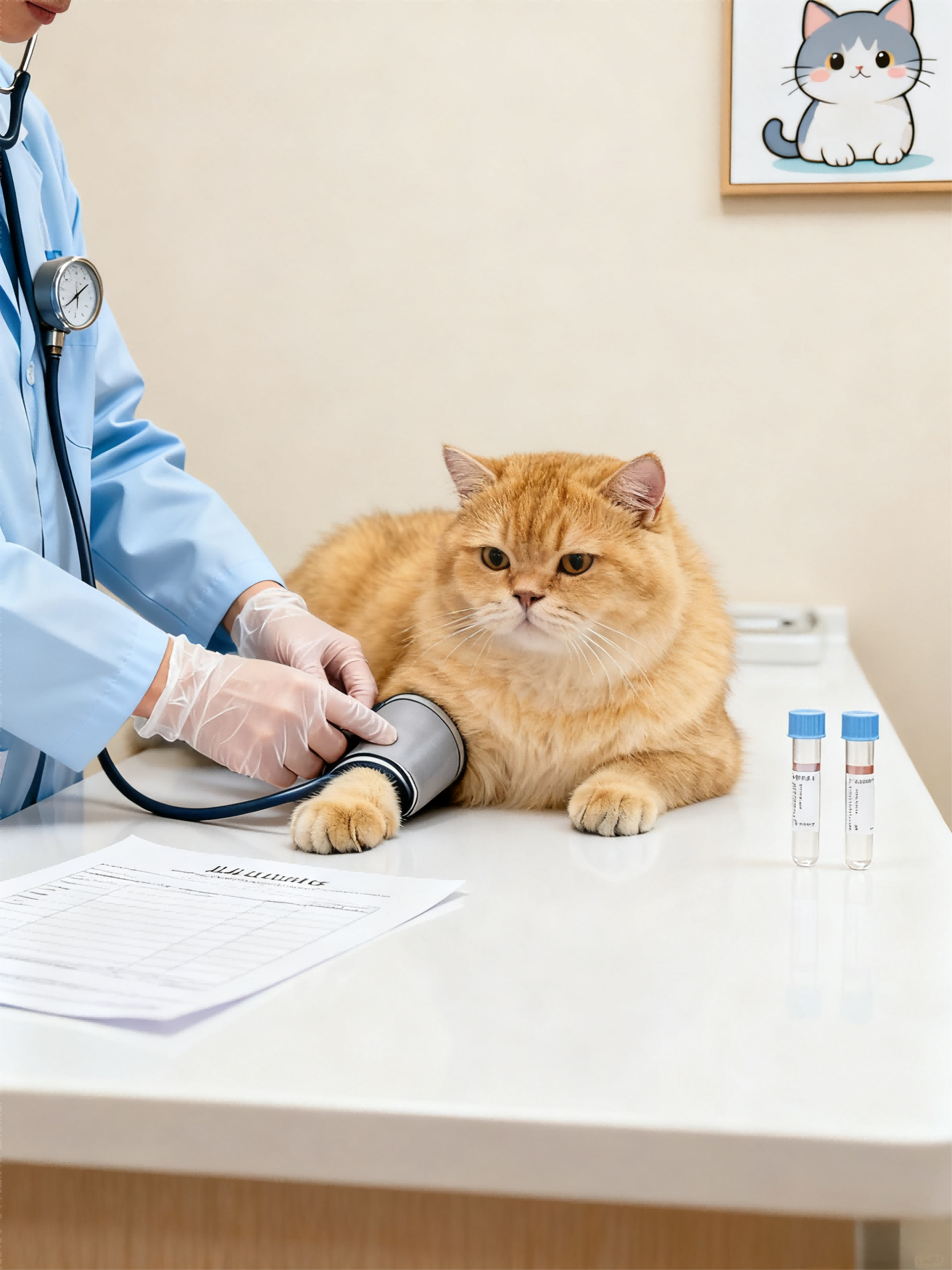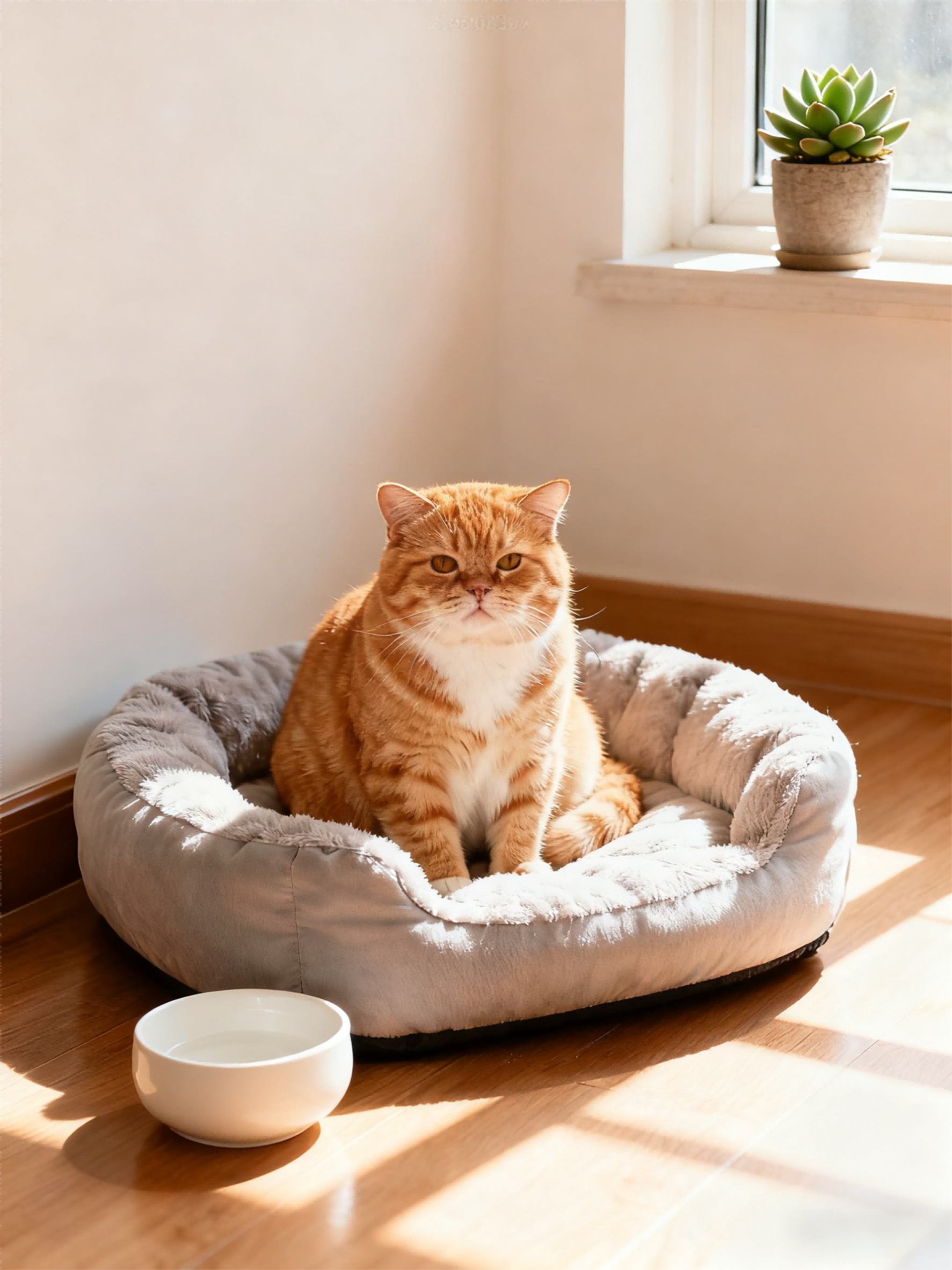

Sep. 29, 2025
When cats reach 7 to 10 years old, they enter the middle-aged stage, where subtle yet significant changes in physical functions begin to occur. At this critical juncture, cat care should shift from "daily routine maintenance" to "proactive health monitoring" to pre-empt potential risks and ensure a smooth transition through this phase. Below is a comprehensive, multi-dimensional care plan tailored to their physiological characteristics.
1. First, Understand the Core Physiological Changes in Middle-Aged Cats
During this stage, cats exhibit "degenerative" signs in their bodies. Focus on the following three key areas to lay the foundation for effective care:
Metabolic rate decreases by approximately 15%-20% compared to the young adult stage. Even with no change in food intake, cats are prone to fat accumulation due to reduced calorie burn. Obesity, in turn, directly increases joint strain and the risk of diabetes, acting as a "trigger" for chronic diseases.
Organs such as the kidneys (declined filtration function), liver (reduced detoxification capacity), and thyroid glands (susceptibility to hyperthyroidism or hypothyroidism) start to experience functional decline. Early-stage symptoms are often unnoticeable, but once signs like "increased water intake, excessive urination, sudden appetite changes, or lethargy" appear, the condition has typically progressed to the middle or advanced stage.
Joint cartilage gradually wears down, especially in overweight cats. Behavioral changes such as "struggling to jump onto sofas, slow movement when standing up, or loss of interest in running and jumping" may occur. Neglecting these signs can lead to osteoarthritis, significantly impacting the cat’s quality of life.
2. Core Care: Implementing Strategies Across 4 Dimensions – Diet, Healthcare, Living Environment, and Exercise
1. Nutrition Management: Precise Portion Control to Meet Middle-Aged Needs
Diet is crucial for weight management and organ protection. Avoid "feeding based on intuition" and follow these principles:
This type of cat food is formulated with optimizations: it contains 8%-12% fewer calories than adult cat food (to reduce obesity risk), and is enriched with glucosamine, chondroitin sulfate (for joint protection), and Omega-3 fatty acids (to support kidney health and reduce inflammation). Avoid long-term feeding of regular adult cat food that is high in oil and salt.
Weigh your cat regularly at a fixed time (e.g., on an empty stomach in the morning). Reference safe weight ranges for different breeds:
If the cat’s weight fluctuates by more than 5% within a month (e.g., a 5-kg cat gains or loses over 0.25 kg), adjust the food portion promptly or consult a vet to identify the cause.
Feed 3-4 times a day, with each portion sized to be consumed within 15-20 minutes. Avoid sudden food changes (a 7-day transition period is recommended: mix 80% old food with 20% new food on days 1-2, then gradually increase the proportion of new food) to prevent gastrointestinal discomfort.
2. Healthcare Monitoring: Semi-Annual Check-Ups to Intercept Chronic Diseases Early
Routine check-ups for middle-aged cats should go beyond "basic packages" and be upgraded to "chronic disease screening packages," with a focus on the following items:
| Examination Category | Core Test Items | Monitoring Purpose |
| Blood Biochemistry Test | Creatinine, Urea Nitrogen (kidney), ALT/AST (liver), Blood Glucose, Thyroid Hormones (T3/T4) | Detect early-stage kidney disease, liver disease, diabetes, and thyroid disorders |
| Urinalysis | Urine Specific Gravity, Urinary Protein, Urinary Glucose | Assist in evaluating kidney concentrating function and screen for proteinuria (a sign of kidney disease) |
| Blood Pressure Measurement | Systolic and Diastolic Blood Pressure | Identify hypertension, which is often associated with kidney disease or hyperthyroidism |
| Oral Examination | Gum Condition, Tartar Accumulation, Tooth Health | Prevent periodontal disease (a common issue in middle-aged cats that can affect overall health) |

3. Living Environment: Enhance Comfort to Adapt to Physical Changes
Adjust the home environment to accommodate the cat’s declining mobility and increased need for stability:
Replace high cat trees or elevated perches with low-lying beds (no more than 30 cm in height) placed near windows or quiet corners. Add soft, thick cushions to reduce pressure on joints when resting.
Choose litter boxes with low edges (height ≤ 15 cm) to make it easier for cats with joint discomfort to enter and exit. Place multiple litter boxes in different areas of the house (especially for multi-cat households) to avoid stress from competition.
Avoid frequent rearrangements of furniture, loud noises (e.g., excessive vacuuming), or the introduction of new pets/household members without gradual adaptation. A stable environment helps reduce anxiety, which is beneficial for the cat’s mental and physical health.
4. Exercise and Joint Care: Gentle Activity to Maintain Mobility
Encourage moderate exercise while protecting the cat’s joints to slow down functional decline:
Engage the cat in 10-15 minute play sessions 2-3 times a day using toys like feather wands or laser pointers (avoid directing the laser at the cat’s eyes). Focus on low-intensity movements (e.g., slow chasing instead of high jumping) to prevent joint strain.
If the cat shows signs of joint discomfort (e.g., stiffness after resting), consult a vet about joint health supplements containing glucosamine, chondroitin, or green-lipped mussel extract. Never administer human supplements without professional advice, as they may be toxic to cats.

Final Note
Middle age is a "critical window" for maintaining a cat’s long-term health. By combining scientific nutrition, regular medical screening, a comfortable living environment, and appropriate exercise, you can help your middle-aged cat stay healthy and enjoy their golden years to the fullest.